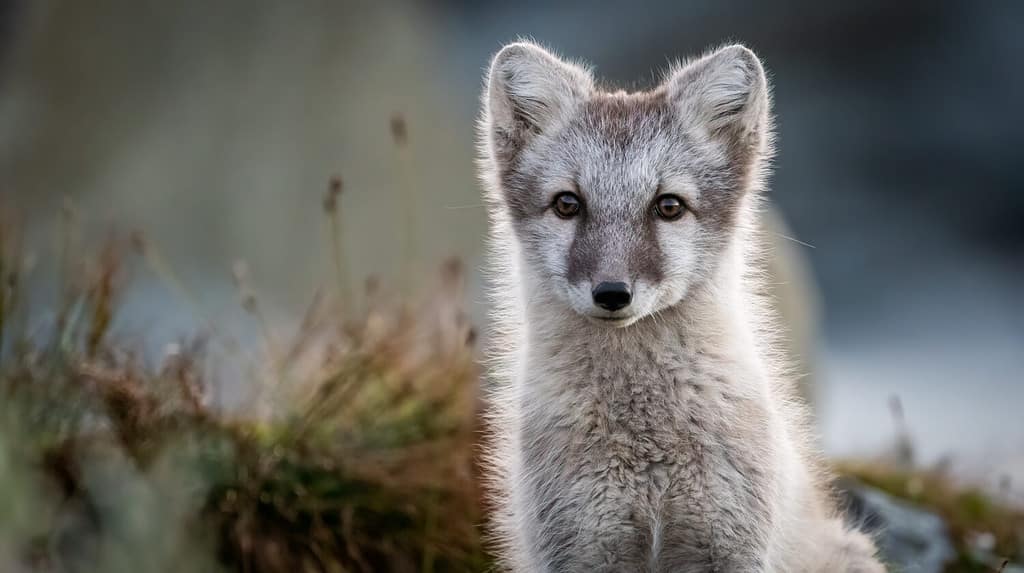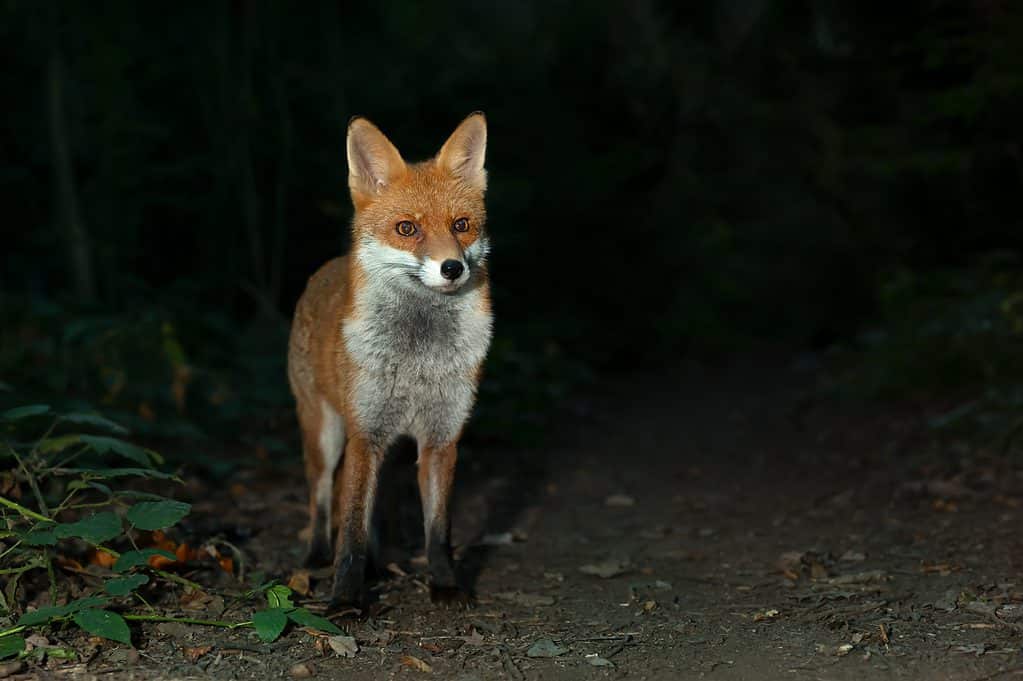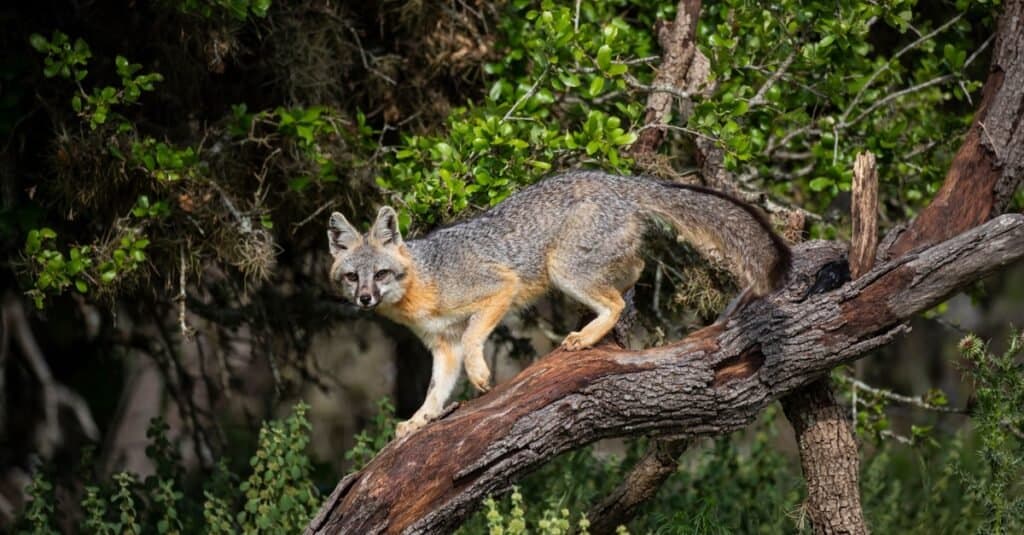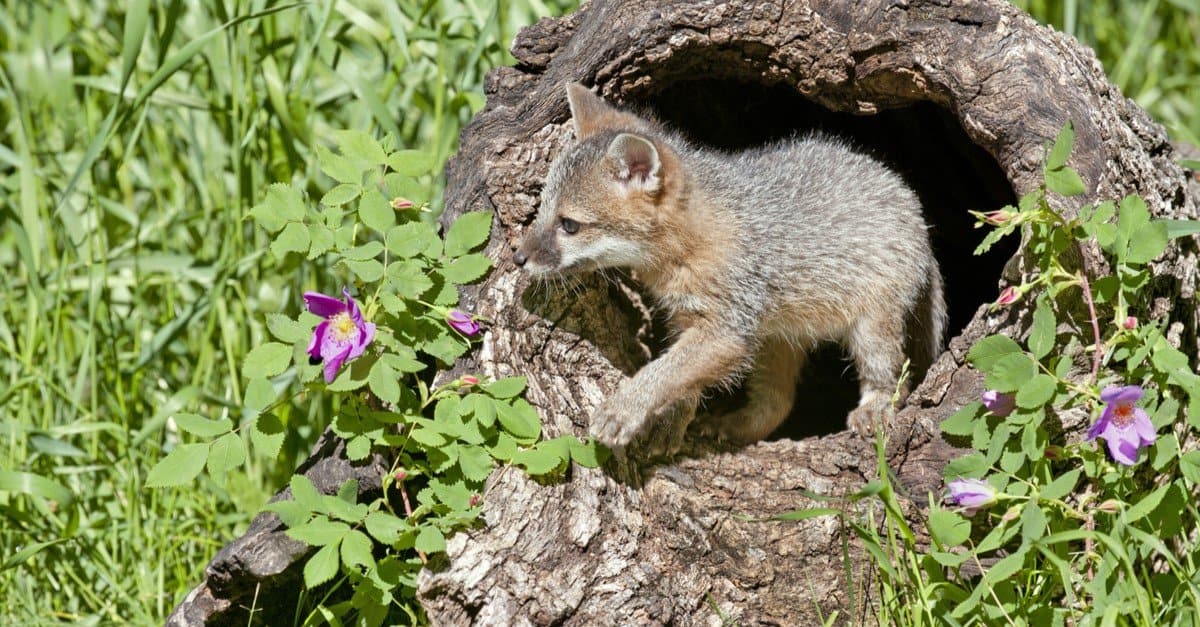The bushy tail and swift dash across the road tell you that a fox just crossed. But they’re quick – and you couldn’t quite get a good look. You’re driving through West Virginia and you knew foxes live here, but which one did you just see?
We’re going to look at the two species of foxes in West Virginia so that maybe you can figure it out. They, along with many other wild animals, make the Mountain State their home. These critters are all a part of the ecosystem of this beautiful state, so it’s important to understand and protect them.
How Many Types of Foxes Are There in the USA?

America is home to four species of foxes, including the gorgeous
Arctic fox
.
©Cecilie Bergan Stuedal/Shutterstock.com
Four species of foxes call America their home: red, gray, kit, and Arctic foxes. Both the red and the gray fox live in West Virginia. These are the two most common species of foxes found in the United States.
Red Fox (Vulpes vulpes)

The red fox has that distinctive, giant bushy red tail with a white tip.
©Ondrej Prosicky/Shutterstock.com
In the United States, red foxes are the most common species of fox you’ll find roaming the wilds of the forests and deserts. They are the largest true fox species and belong to the order Carnivora. North America, Asia, Europe, and parts of North Africa are the native home regions for the fox species, but they’ve been introduced elsewhere in the world as well. Often, these introductions were made to reduce other invasive species like rabbits in Australia.
Male red foxes are known as tods or dogs, with females called vixens, and young foxes are kits (or cubs).
The species is unusually adaptable, which allows them to live in all sorts of terrains, like deserts, forests, wetlands, and more. This is why you’ll find red foxes in both West Virginia’s forestlands and Idaho’s arid regions.
Description
With a long body and short limbs, red foxes are primarily known for their long, fluffy tails. The tails are longer than the body’s length on the foxes, which is part of why they’re so distinct. Red foxes have oval, vertically oriented pupils (like a cat’s), with the “third eyelids” (nictitating membranes), which move when they close their eyes. If you’ve ever looked at a cat and seen its eyes and then seen it open its eyelids, the weird filmy layer is what this is.
Red foxes have five digits on their forepaws, but their hind feet only have four digits, with the lack of dewclaws that other canids have (the little “toe” that looks like a thumb on a dog’s paw). They also bear black “stockings” on their feet.
Red foxes experience sexual dimorphism, meaning that differences are visible between the sexes. Females tend to have smaller heads and wide nasal regions, and weigh about 15 to 20% less than males.
Red foxes weigh, on average, between 6.5 and 31.0 pounds. Their body length is usually 1.5 to 3.0 feet, plus tails 12.0 to 22.0 inches long.
Because of their location in West Virginia, red foxes here have thicker, denser, longer fur that helps keep them warm. Warmer climate red foxes have thinner fur.
While we think of red foxes matching their name, some color morphs occur with black, silver, or a cross between the two occurring in the same fox, known as a cross fox. Fox species do not interbreed, so even though some foxes look like a mix between red and gray foxes, these are just color morphs. You can tell the difference between red cross foxes and others by the distinctive, white-tipped tail (red fox).
Behavior

Red foxes function as crepuscular or nocturnal animals.
©Giedriius/Shutterstock.com
Red foxes mate for life and tend to live as either mated pairs or family units of adults with their young. The semi-social animals raise their offspring together with the help of older offspring, until those young mature enough to start their own family units. Often, males with kinship ties to females will remain in groups with multiple females and create a larger family group.
These beautiful animals primarily feed on small rodents like squirrels, mice, and rabbits. They also hunt reptiles, birds, and invertebrates. And though it may seem extraordinary by their size, they also hunt sheep and other larger mammals with hooves (ungulates). They are technically omnivorous and round out their diets with vegetables, fruits, and other plant matter.
Red foxes typically live about 3 years in the wild, while they may reach 12 years in captivity in zoos and sanctuaries. Part of this is because though they are predators themselves, they are also prone to some predators, as well. Mountain lions and other large cats, predator birds, coyotes, and wolves all threaten foxes in the wild.
And though some folks may wish to domesticate foxes – some experiments have been conducted in this vein – foxes are not really domesticated. They do not make safe pets, even though in many places they will come to peoples’ yards to eat from bowls set out for them.
Habitat and Distribution
Typically, red foxes in West Virginia make their habitats within rolling hills and farmlands. They prefer open field areas for hunting mice and other small rodents.
Overall, red foxes range from the Arctic Circle and down as far south as extreme southeast Asia and into the Sahara Desert. All over the world, they prefer farmlands, desert, prairie, tundra, forest, mixed vegetation, and even urban areas. So, you could spot them practically in any kind of habitation in West Virginia.
Gray Fox (Urocyon cinereoargenteus)
The gray fox (also spelled grey fox) belongs to the omnivorous Canidae family. They’re the second most widespread fox species in the United States. They live natively throughout North America and Central America. The fox is smaller than the red fox and the name means “ashen silver,” which describes the fur coloration fairly well.
Formerly the most common fox in the eastern United States, the gray fox has been pushed out and the red fox has become more common. Still, the gray fox thrives in both suburban and urban areas, particularly in places like Florida, the Great Lakes Region, and the Pacific States.
Description

Gray Fox (Urocyon cinereoargenteus) makes a noise more similar to a dog’s bark than a woman’s scream. And love climbing trees.
©Danita Delimont/Shutterstock.com
It’s easy to tell the gray fox from other canids by the grizzled upper parts. They also bear a black stripe down the tail and have a strong, developed neck. Their tails end with a black tip. Their ears and muzzle are angular and pointed, and they have lengthy, curved claws.
While red foxes demonstrate noticeable sexual dimorphism, gray foxes have this less pronounced. Females tend only toward slightly smaller frames than males. Typically, gray foxes weigh between 7.9 and 15.4 pounds, have tails of 10.8 to 17.4 inches, and bodies 29.9 to 44.3 inches long.
While red fur is the main color of a gray fox’s body, the black stripe down their back and neck help to distinguish them from others. Their distinctive lack of black “stockings” also helps. Additionally, gray foxes have banded guard hairs in white, gray, and black. Their ears, throat, chest, belly, and hindlegs also display white legs and black around the eyes, noses, and lips.
Another distinction for gray foxes is that they have oval pupils, unlike the slitted pupils of red foxes.
Behavior
Strong, hooked claws have given gray foxes the distinctive ability to climb trees. This means they are able to scramble up trees, away from predators like wolves and coyotes. This also gives them an advantage in the food chain: they can reach fresh arboreal fruits. These smaller foxes are adept in climbing limbless trees and able to reach as high as 26 feet. Then, they leap from branch to branch, across to other trees or back down to safety.
Crepuscular (dawn/dusk) or nocturnal, gray foxes make their dens in hollow trees, burrows, or stumps and hide out during the day. Because of their climbing abilities, they may even make their dens up to 30 feet above the ground.
Distribution and Habitat
Gray foxes most commonly reside in rocky, wooded, or brushy regions of West Virginia and other locations. Their habitats reach from southern Canada from Manitoba to Quebec. Additionally, their range stretches through the United States and down through Venezuela and Colombia in the South America. They don’t live in the mountains of the northwestern United States, though. The gray fox is the only known canid species whose natural range spans North and South America.
Thank you for reading! Have some feedback for us? Contact the AZ Animals editorial team.








